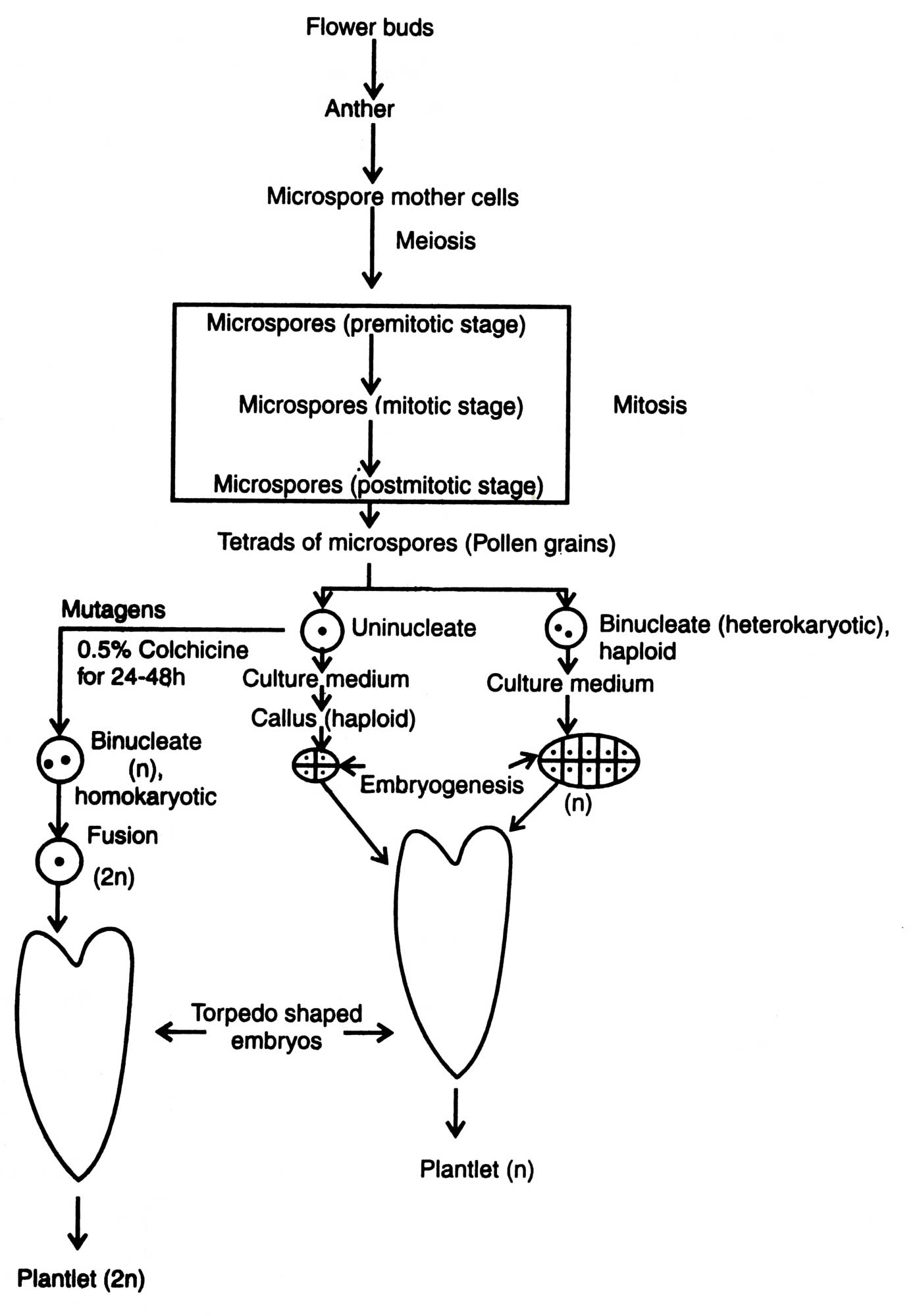Anther and Pollen Culture (Production of Haploid Plants)
Tulecke (1951) cultured pollen grains of Ginkgo biloba (gymnosperm) and succeeded to induce the development of haploid callus. Guha and Maheswari (1964) made a remarkable discovery by culturing pollen grains of an angiospermic plant, Datura innoxia on the nutrient agar medium and also developed torpedo- shaped embryoids that metamorphosed into plantlets through the process.
Sunderland (1979) has described that the anthers to be cultured should be one of the three categories i.e. premitotic, mitotic and postmitotic. In premitotic anthers, where the microspores have completed meiosis but not started first pollen division, the best response is achieved e.g. Hordeum vulgare. In mitotic anthers where first pollen division has started the optimum responses are achieved e.g. N. tabacum and D. innoxia. In post mitotic anthers, the early bicellular stage of pollen development is the best time to culture e.g. Atropa belladona.
In China, the most widely grown wheat is a doubled haploid produced through homozygous diploid lines. Anther culture of rice is also successfully grown. Haploid plants have been produced in tobacco, wheat and rice through pollen culture. These are used for the development of disease resistant and superior diploid lines.
At present, more than 247 plant species and hybrids belonging to 38 genera and 34 families of dicots and monocots have been regenerated using anther culture technique. They include economically important crops and trees such as rice, wheat maize, coconut, rubber trees, etc, (Maheswari et al.1983).
Methods of anther culture are shown in Fig. 8.9. Anthers are superficially sterilized and washed with double distilled sterile water. They are excised from the flower buds and their proper developmental stages are determined under microscope. On confirmation of a stage, (a) the anthers are directly transferred on nutrient agar or liquid medium where induction of embryogenesis occurs, or (b) the pollen grains are aseptically removed from the anthers and cultured on liquid medium (Reinert and Bajaj, 1977).





